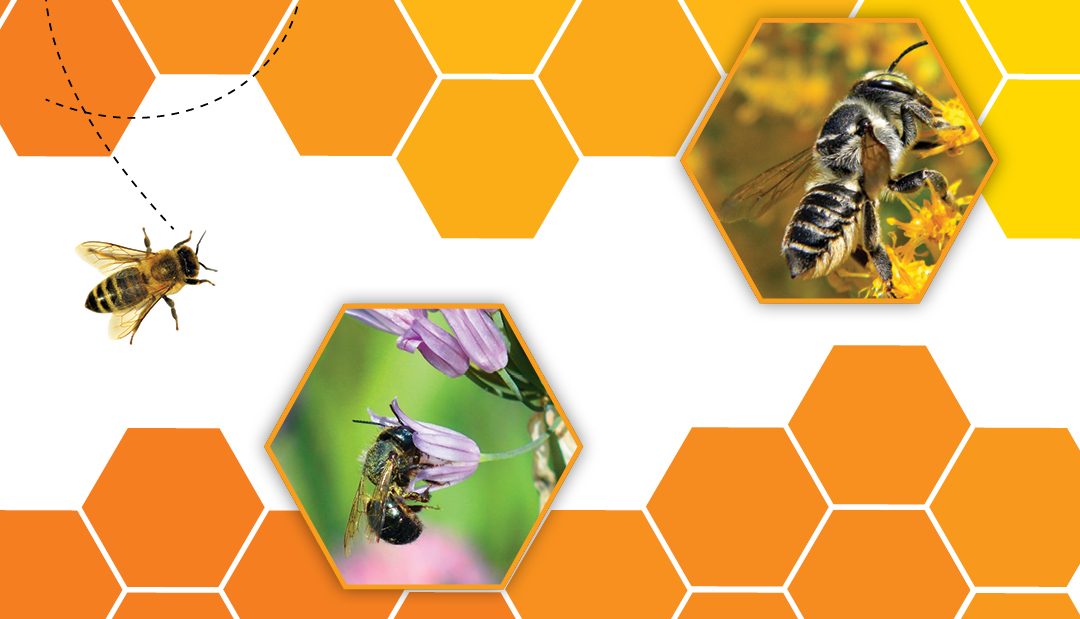Written by Pam Varga, Chairman of Advisory Committee
At Sahli Nature Park this summer, we’ll be raising bees. Not Honeybees raised in square white boxes. We’ll be raising native Blue Orchard Mason Bees and Alfalfa Leafcutter Bees.
Honeybees were brought to North America by the first colonists to provide them with honey and wax. Native bees were found naturally in North America when the colonists arrived.
There are about 3,500 species of native bees in North America. 90% of them are solitary bees that do not live together in groups. Honeybees are very different from
our solitary cavity nesting native bees.
Honeybees are social, living together in large groups. A queen bee lays all of the eggs while the other bees gather food and tend to the eggs and young. Mason Bees and Leafcutter Bees are solitary bees. They do not live together in groups. Each female bee lays her own eggs in hollow reeds and stems, or empty insect burrows in trees.
Honeybees make honey which they use for food and store in their hive. Mason and Leafcutter Bees do not make honey
When defending their hive, Honeybees are quite aggressive and can deliver a painful sting. Because they have no hive to defend, Mason and Leafcutter bees are not aggressive. They do not even have “stingers”. The female can give you a sharp poke but it is no more painful than a mosquito bite.
The female Mason Bee or Leafcutter Bee lays a single egg in a hollow reed or an empty insect tunnel in a dead tree. She mixes together pollen and nectar she has gathered from flowers to make “bee bread”. She places a pea-sized bit of bee bread beside the egg. The female seals off the egg chamber with a bit of mud or grass and then lays another egg. When she reaches the end of the tunnel, the female seals it to protect her eggs. Mason Bees use a bit of mud or clay to seal the opening, while Leafcutters use plant material. A tiny white caterpillar, called a larva, hatches from the egg and eats the bee bread. Soon the larva will undergo a transformation similar to the way a caterpillar changes into a butterfly or moth. The bee larva spins a cocoon around itself. Inside the cocoon, a hard shell forms over the larva’s body. The larva is now in the pupa stage of its life and changes into the shape of an adult bee. The new adult bee chews its way out of the nesting tunnel and flies away to find food in the form of pollen and nectar from flowers.
In recent years, the population of our native bees has seriously declined. Loss of habitat including nesting sites and the flowers the bees feed on, the increased use of pesticides in agriculture and home gardens, and climate change have all contributed to this decline.
As part of our Pollinator Conservation Project at Sahli Park, we will be putting up several man-made nesting boxes for bees. The nesting boxes are filled with hollow reeds, some containing Blue Orchard Mason Bee and Alfalfa Leafcutter Bee cocoons. The Mason Bees will emerge in the spring, the Leafcutter Bees later in the summer. Later, the female bees will use the remaining reeds for nesting chambers. The kinds of flowers in our pollinator gardens near the greenhouse have been especially selected to provide pollen and nectar for bees and butterflies. Wildflowers in the meadow are also rich in pollen and nectar.
If you are interested in helping the bees by planting a pollinator garden, you can call the park at 724 384-1598 and request a plant list, or talk to us at the greenhouse this summer.
Good books about bees and pollinator gardening are: “Bees” by Heather Holm, “100 Plants to Feed the Bees” by the Xerces Society, and “Attracting Native Pollinators” by the Xerces Society. All are available online through Amazon. Bee nesting boxes and live bee cocoons can be purchased from www.masonbeesforsale.com, www.crownbees.com,
and www.tractorsupply.com (on-line only ). The first two websites also have lots of good information about our native bees.







